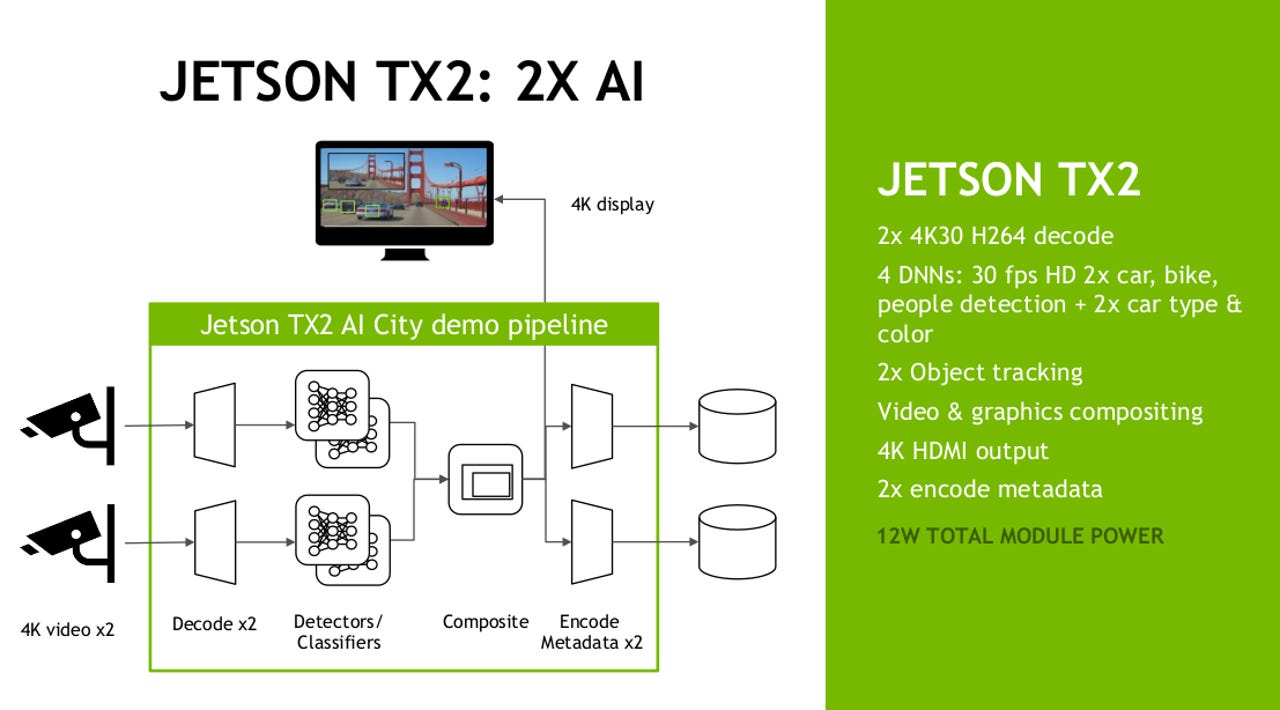Nvidia takes Pascal onto Jetson to boost embedded AI


Nvidia has continued the rollout of its Pascal-based chipsets, with its Jetson embedded platform officially joining the latest generation of Nvidia products.
The Jetson TX2 arrives with a Pascal GPU, Nvidia Denver 2 and A57 processing units, 8GB of memory that is touted to transfer 58.3 gigabytes per second, and 32GB of eMMc flash storage.
With twice the number of camera processing lanes compared to the TX1, the TX2 is able to handle a pair of 4K video streams in its processing pipeline. Physically, the TX2 keeps the same 50mm by 87mm dimensions as the TX1.
Depending on whether the TX2 is run in performance or power efficiency mode, the new device offers twice the performance, or twice the energy efficiency, of the TX1.
"Jetson TX2 brings powerful AI capabilities at the edge, making possible a new class of intelligent machines," said Nvidia vice president and general manager of Tegra Deepu Talla in a statement.
"These devices will enable intelligent video analytics that keep our cities smarter and safer, new kinds of robots that optimise manufacturing, and new collaboration that makes long-distance work more efficient."
The TX2 is expected to be available in the second quarter of this year, and will cost $400 per unit for quantities of over 1,000 units.
A TX2 development kit is able to be pre-ordered in the US and Europe from now for $600, while other areas of the world will be able to order the kit from next month.
Nvidia also announced an update to its Jetpack SDK, which now uses a Linux 4.4 kernel, has its multimedia API bumped to version 27.1, and is claimed to deliver twice the system performance compared to Jetpack 2.3 released in September.
In September, the company launched its Tesla P4 and P40 GPUs designed for running neural networks.
Nvidia took the wraps off its Pascal architecture in May, when it launched its GTX 1080 and 1070. At the time, Nvidia CEO Jen-Hsun Huang claimed the 1080 had twice the performance and three times the efficiency of its former beefiest card, the Titan X.
Last week, Nvidia unveiled its GeForce GTX 1080 Ti GPU, comprised of 3,584 Nvidia Cuda cores and 11 gigabytes of GDDR5X memory.
"GTX 1080 Ti is the world's first GPU to feature Micron's next-gen G5X memory," the company said. "11 gigabytes of G5X memory running a blazing 11 gigabytes per second quad data rate delivers the most effective memory bandwidth of any modern gaming GPU. And it still has plenty of headroom for overclocking."